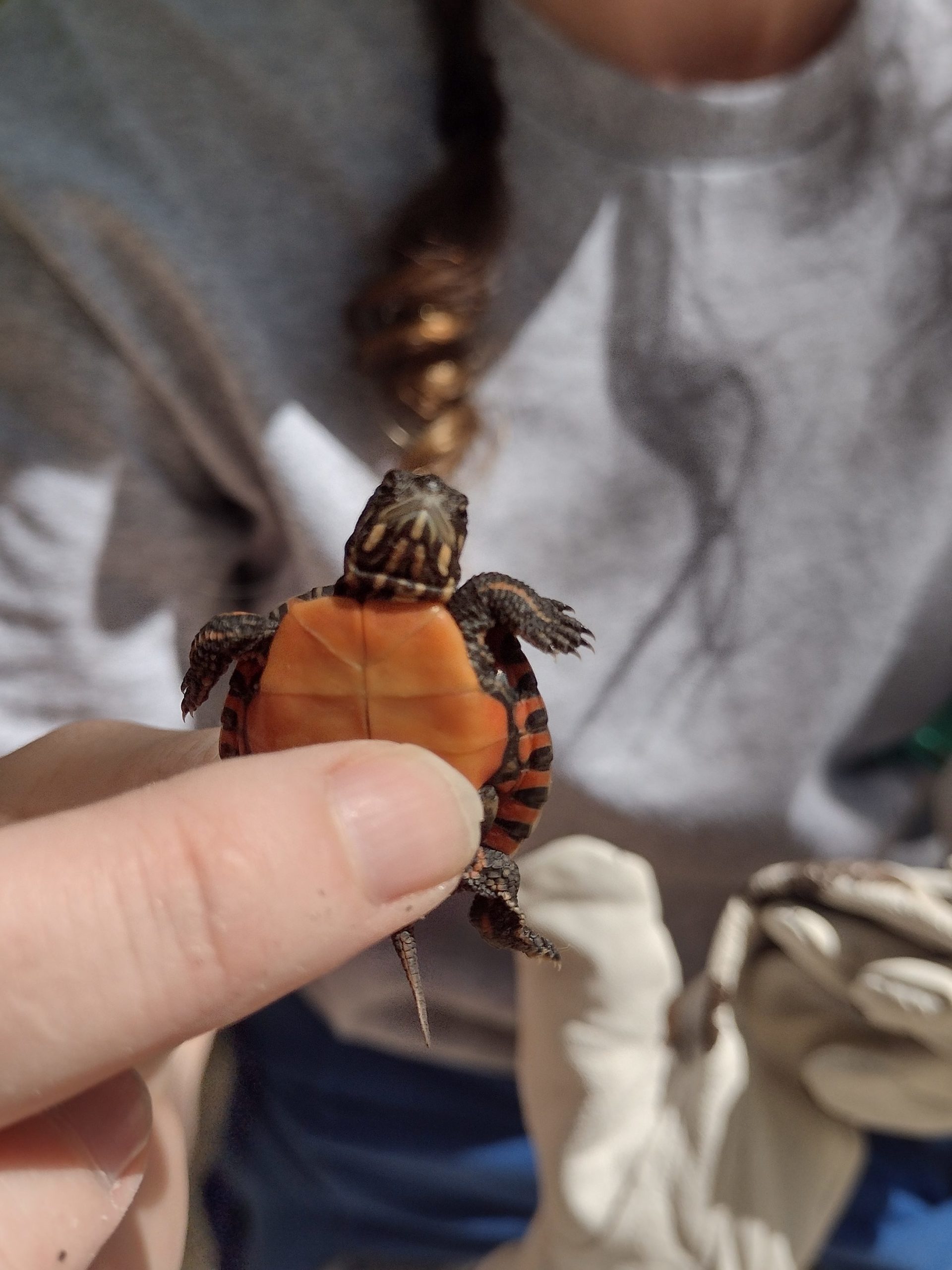Renee Doran – SCA NH Corps – Discover the Power of Parks Interpretive Ranger
I have been living at Bear Brook State Park since April and one of my favorite things about living in the park is the abundance of wildlife I get to see. Turkeys, deer, salamanders, frogs, song birds, porcupines, and many other animals abound in the park. But there’s one animal has become a significant part of my time here: the turtles. All of the SCA Interpretive Rangers always kept an eye out for turtles basking on logs in Hayes Marsh as we drove by. One time while I was hiking around Bear Brook I saw a snapping turtle nesting on Beaver Pond Beach. During this past month, I provided a Discover the Power of Parks program that brought many questions and excitement about turtles, as we had painted turtles come onto the camp ground ball field looking for nesting space.
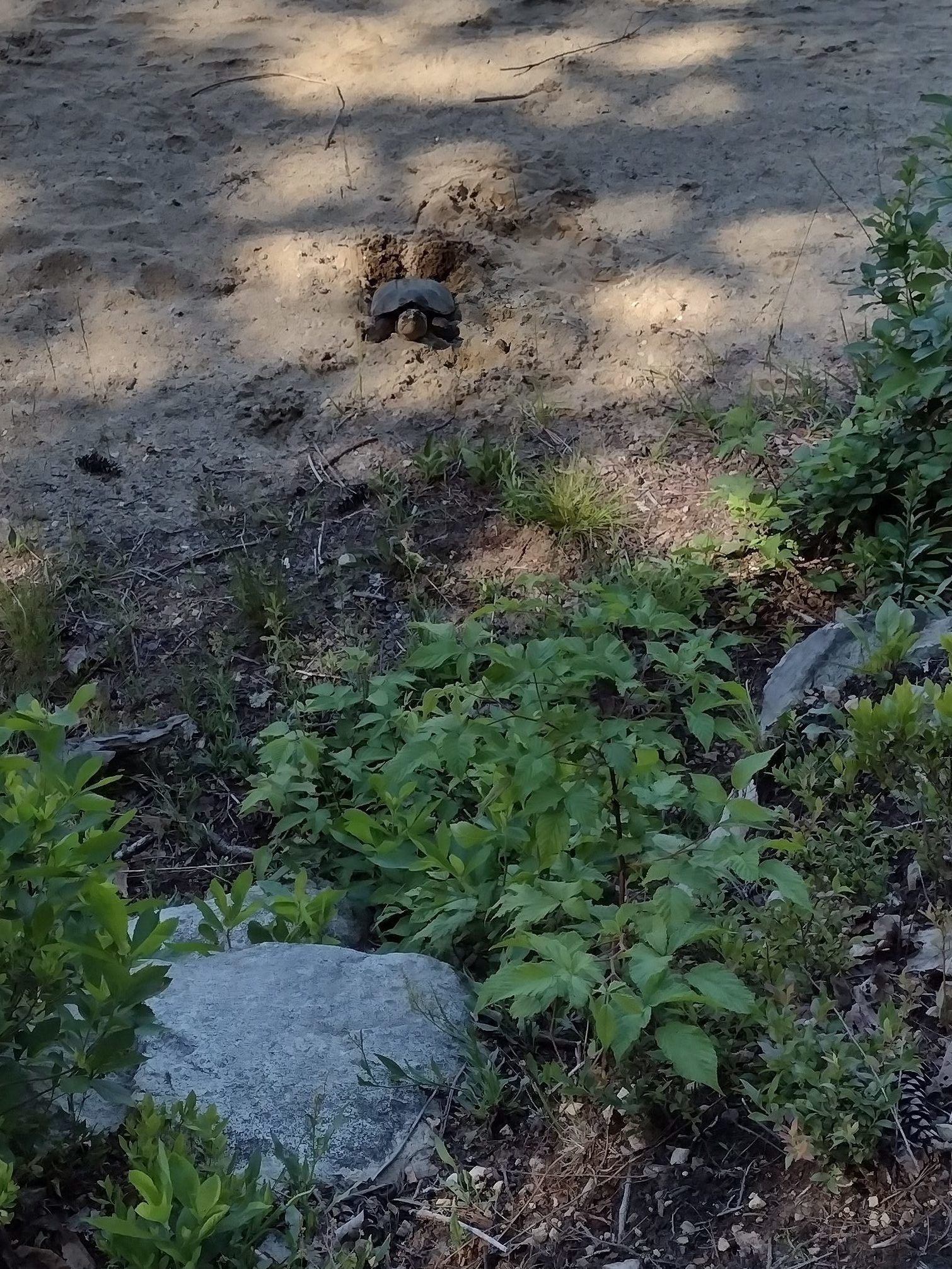
With all the excitement about turtles, I was curious about what kinds of turtles I may see in this region of New Hampshire. We have six species of turtles that live in the area, three of which are either endangered, threatened, or of critical concern in New Hampshire.
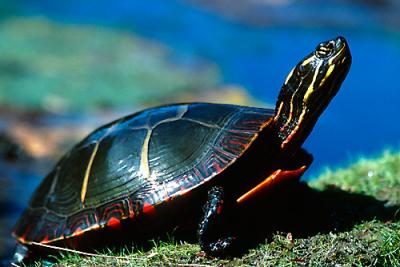
Painted Turtles: Painted turtles are perhaps the most common turtle in New Hampshire and are the one you are most likely to see. They are four to six inches long and have shells that usually appear shiny. They are named for the ‘painted’ yellow lines that run along their heads. You may see groups of painted turtles basking on logs or rocks in ponds, lakes, and wetlands.
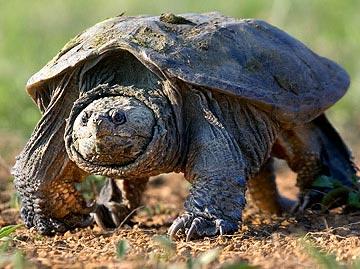
Snapping Turtle: Snapping turtle is the largest turtle in New Hampshire that can measure eight to fourteen inches long and up to seventy pounds. Snapping turtles spend most of their time on the bottom of lakes, ponds, and wetlands, but can be seen on land moving between wetlands or when looking for places to nest. They cannot retract their head or limbs into their shells like most turtle species so can use their powerful jaws to snap defensively if they feel threatened.
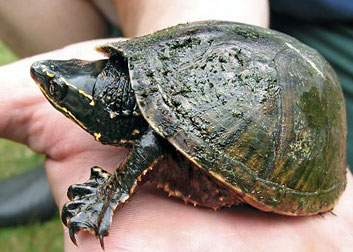
Musk Turtle: Musk turtles are small two to five inch turtles that have rounded shells. They have stable populations in New Hampshire, but are seldom seen as the spend most of their time in the leaf litter on the bottom of ponds and lakes. They are also called Stink Pots as they have a strong sulfur like odor.
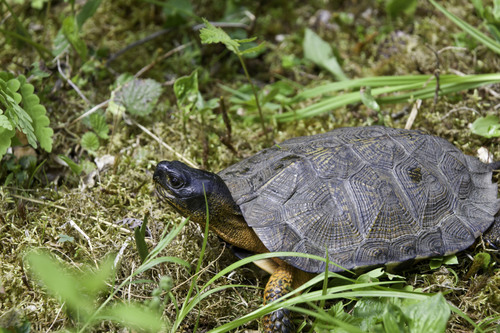
Wood Turtle: Wood turtles are considered a species of special concern in New Hampshire, and they are being monitored and protected by NH Fish and Game. Wood turtles are 5-8 inches long and have sculpted and patterned shells. They live near streams and channels, and they spend time in the surrounding forests, wetlands, meadows, and fields.
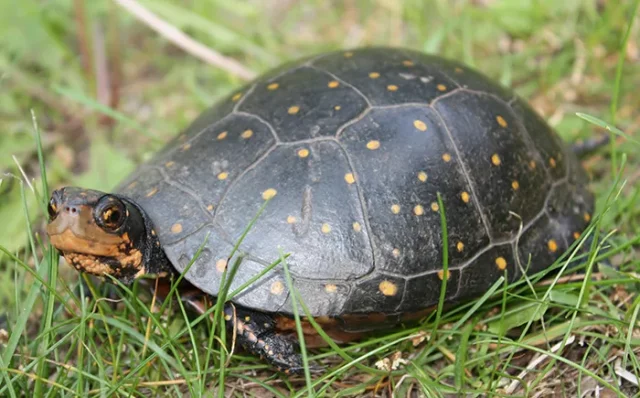
Spotted Turtle: Spotted turtles are considered a threatened species in New Hampshire and are protected from capture, hunting, and harassment. They are three to five inches long and have yellow spotted dark shells. They spend most of their time in ponds, lakes, vernal pools, and wetlands.

Blanding’s Turtle: Blanding’s turtles are an endangered species in New Hampshire and are protected in the state from capture, hunting, and harassment. They are seven to nine inches long and have yellow speckled, dark colored, dome or helmet shaped shells. They spend most of their time in marshes, ponds, swamps, and occasionally vernal pools. You may see them basking on logs next to painted turtles.
Why are we seeing turtles around campgrounds, on beaches, and crossing roads?
After learning a little bit about the species of turtles I that could be living at Bear Brook, I was curious about why I was seeing them in the campground areas and on the beaches. After some research, I discovered that during spring and summer turtles are breeding, and the females are looking for areas to nest and lay their eggs. In the search for good nesting grounds, they are coming into our recreation areas and crossing roads.

The search for nesting grounds can pose a major threats for our turtles. People gathering around and interacting with turtles can act as a major stressor for the turtles, and can have lasting impacts on the entire population – especially for our endangered and threatened species. So if you see a turtle on a beach, in a campground, or along a trail, don’t walk up to it or try to move it. Give our turtles some space and encourage others to do the same. Turtles will find their way back to the water when they are done nesting. The biggest threat for turtles is road crossings and the potential of being crushed by a car. As you drive along the campground roads, make sure to slow down and brake for our turtles!
